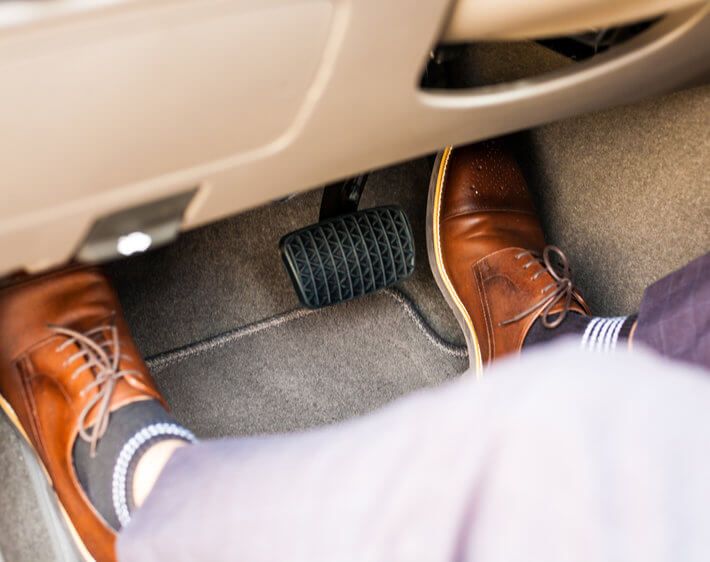You’re a pro–you always remember to engage your parking brake on hills and when you park to protect your transmission from wear and tear. But what happens if you hop into the car and try to disengage the brake, only to find that it’s completely stuck? You could drive with it engaged, but that can damage your brake system. Instead, learn how you may be able to solve for (and avoid) the most common culprits of a stuck parking brake. (And then drive safely to your nearest Firestone Complete Auto Care for a brake service, of course!)
Your parking brake has frozen in cold weather.
Ice can actually cause the parking brake to freeze in place when it’s really cold outside. To solve this problem:
- Turn your car on. As the engine warms the ice may melt, enabling you to disengage the parking brake.
- Gently rev the engine. This can help the engine heat up faster, which in turn can speed up the melting process.
- Try to disengage the parking brake several times after the car has warmed up a bit. This can break up any remaining ice.
Still no luck? Figure out which wheel the parking brake is connected to (consult your owner’s manual) and try to melt the ice with a hairdryer. If you know that temperatures are going to dip below freezing, think twice before engaging your parking brake, especially if the forecast calls for moisture, too!
Your parking brake is stuck due to rust or corrosion.
Over time, the parking brake can become rusty or corroded. Once this happens, the cable that engages the parking brake can get stuck. This can be a harder problem to diagnose and fix in your driveway or garage. If rust is the trouble there's a good chance you'll need to call a tow truck for help, but you may be able to get the parking brake unstuck if you:
- Disturb the brakes manually. Apply and release the brake a number of times.
- Shift into drive and reverse, and back between drive and reverse again to slightly move the vehicle back and forth. This may dislodge some of the rust.
If you're comfortable doing so, check for rust or corrosion by doing a visual inspection of the parking brake cable underneath the car. If the cable or surrounding parts look corroded or rusted, they may need to be replaced.
How can you avoid this one? Using the parking brake every time you stop or at least once a day can make it more difficult for rust to form on the surface of the cable and help your parking brake stay in working order.
Your parking brake was left on too long.
Hopefully, you only leave your parking brake on for limited windows of time. At most, overnight. If you leave your parking brake on for too long (like if your car is in storage during winter) it can become stuck or frozen in place.
Try the same troubleshooting tactics you’d use for a frozen parking brake to solve for this one. If you're headed out of town or don't plan to drive your car for a while, avoid engaging the parking brake unless you know that the parking area is temperature controlled.
Your parking brake was engaged too hard.
If you were channeling your inner-Hulk when you applied the parking brake, you might have accidentally jammed it. Pulling the brake with all of your strength can get the brake shoes stuck against the walls of the wheel drum, and even stretch out the cable that runs from the brake handle to the wheels. If you’ve tried to release the parking brake repeatedly but with no luck, it may be time to call for a tow truck and seek professional help.
Cars may be created equal, but they don't stay that way. Cables wear thin and pieces rust. Make sure you're properly engaging your parking brake and staying ahead of potential brake problems with regular parking brake checks and free inspections at your nearest Firestone Complete Auto Care. And remember: it's best to avoid driving with your parking brake engaged. If you can't get it unstuck, call for roadside assistance or a tow to avoid further damage to the brake system.



